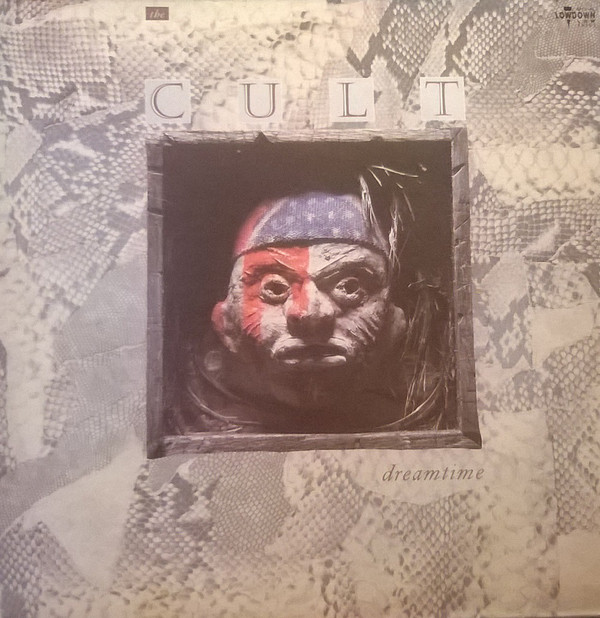By early 1983 Bradford’s goth rockers Southern Death Cult had called it a day, having released a solitary single. An album consisting of said single, as well as a bunch of radio sessions and live recordings was released after their split, however by that time frontman Ian Astbury had already started to lay the foundations of his next act with Hulme born Gretsch white falcon enthusiast Billy Duffy, bass player Jamie Stewart, and drummer Nigel Preston. The name Death Cult lasted for a few months and an eponymous EP, until the much snappier The Cult was adopted, with the band signing to Beggars Banquet somewhere along the way. With The Cult’s incessant touring building a live reputation at a grass roots level, anticipation for their eventual debut album was building, but it wasn’t until late August 1984 until Dreamtime was finally released.
Opening with “Horse Nation”, Dreamtime seats about establishing the early Cult sound, with Astbury’s fascination with the indigenous American and Australian cultures informing his lyrics and his Jim Morrison-indebted hollering already in place, while Billy Duffy hadn’t gone full-on guitar hero just yet, as he was still a few years away from the big riffs that would be a hallmark of The Cult’s late 80s output. Of all of The Cult’s albums, as their debut, Dreamtime is understandably the one which is the closest to the goth sounds of Astbury’s previous acts. It also sounds a bit thinner, though much of that could be put down to the increasingly erratic Nigel Preston’s drum tracks being recorded by the album’s original producer, Joe Julian, while everything else was re-recorded with John Brand. With this in mind, it’s a small miracle that Dreamtime sounds as coherent as it does.
Perhaps inevitably the strongest tracks on Dreamtime are its singles, “Go West” and “Spiritwalker”, two slabs of 80s rock with a pleasing amount of finesse to them, especially when compared to the bludgeoning sound The Cult would adopt towards the end of the decade. The other eight tracks on the original vinyl version of Dreamtime don’t quite reach the same standard, but there’s enough promise in them to indicate that the band had it in them to go on to bigger and better things. As happened sometimes in the mid 80s, there were few more tracks on the CD version of Dreamtime than there was on the vinyl release, but it’s the original core ten tracks on the vinyl version of Dreamtime that have always been its backbone, as “Resurrection Joe” aside, the additional tracks on the CD issues are inferior to the core ten tracks.
As debut albums go, Dreamtime is one that is shot through with promise, and it makes for an informative prologue to The Cult’s better known trilogy of albums that they would release as the 80s progressed. As a standalone listening experience it’s interesting to hear them transition from the goth rock of Death Cult towards a more traditional hard rock act, albeit one taking lyrical direction from Astbury’s interest in other cultures, and a Cult that doesn’t lean so heavily on Billy Duffy’s big riffs. Sure, The Cult would experience bigger success as the decade progressed, but Dreamtime remains one of their most unique albums.














No Comment